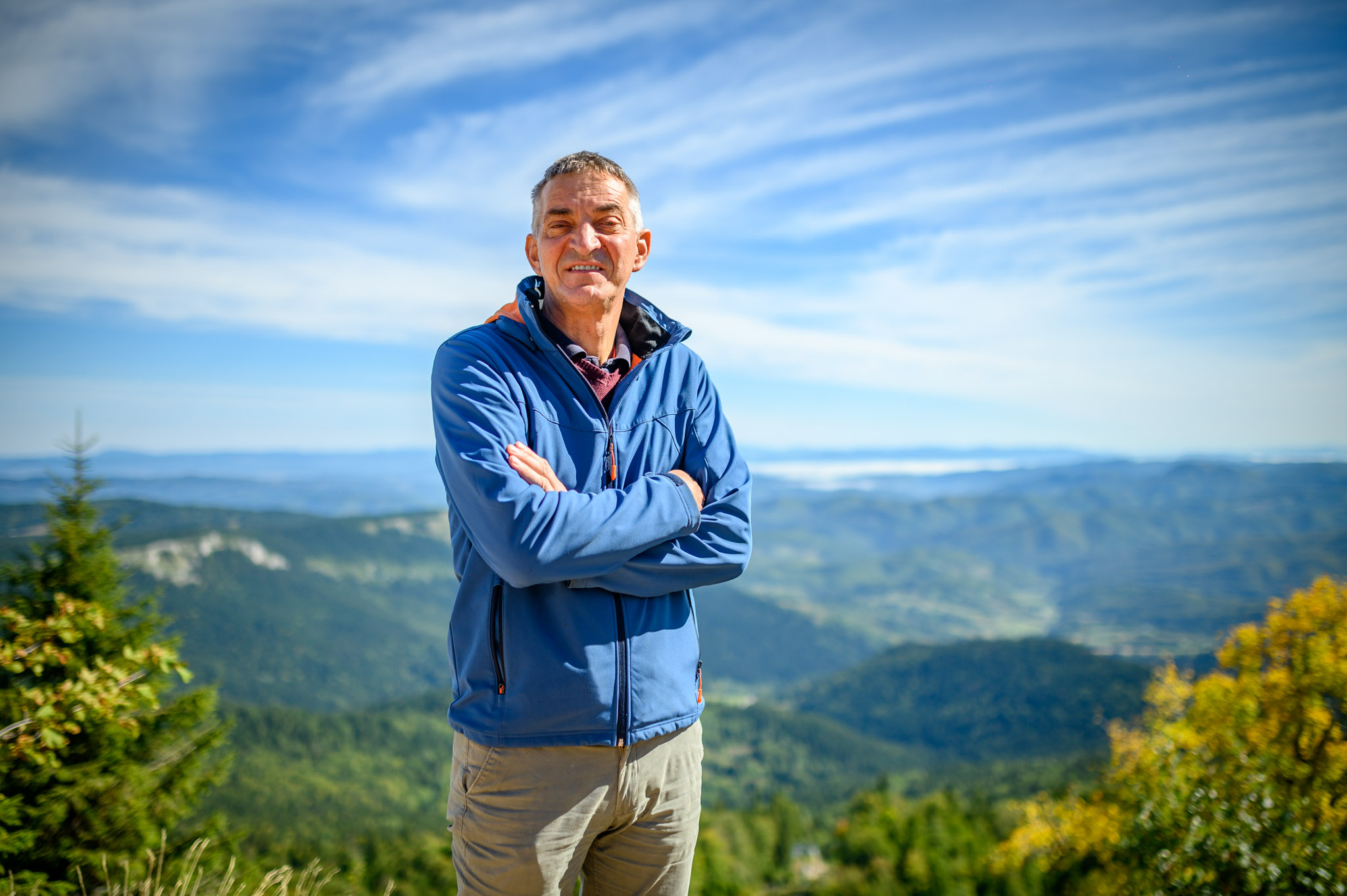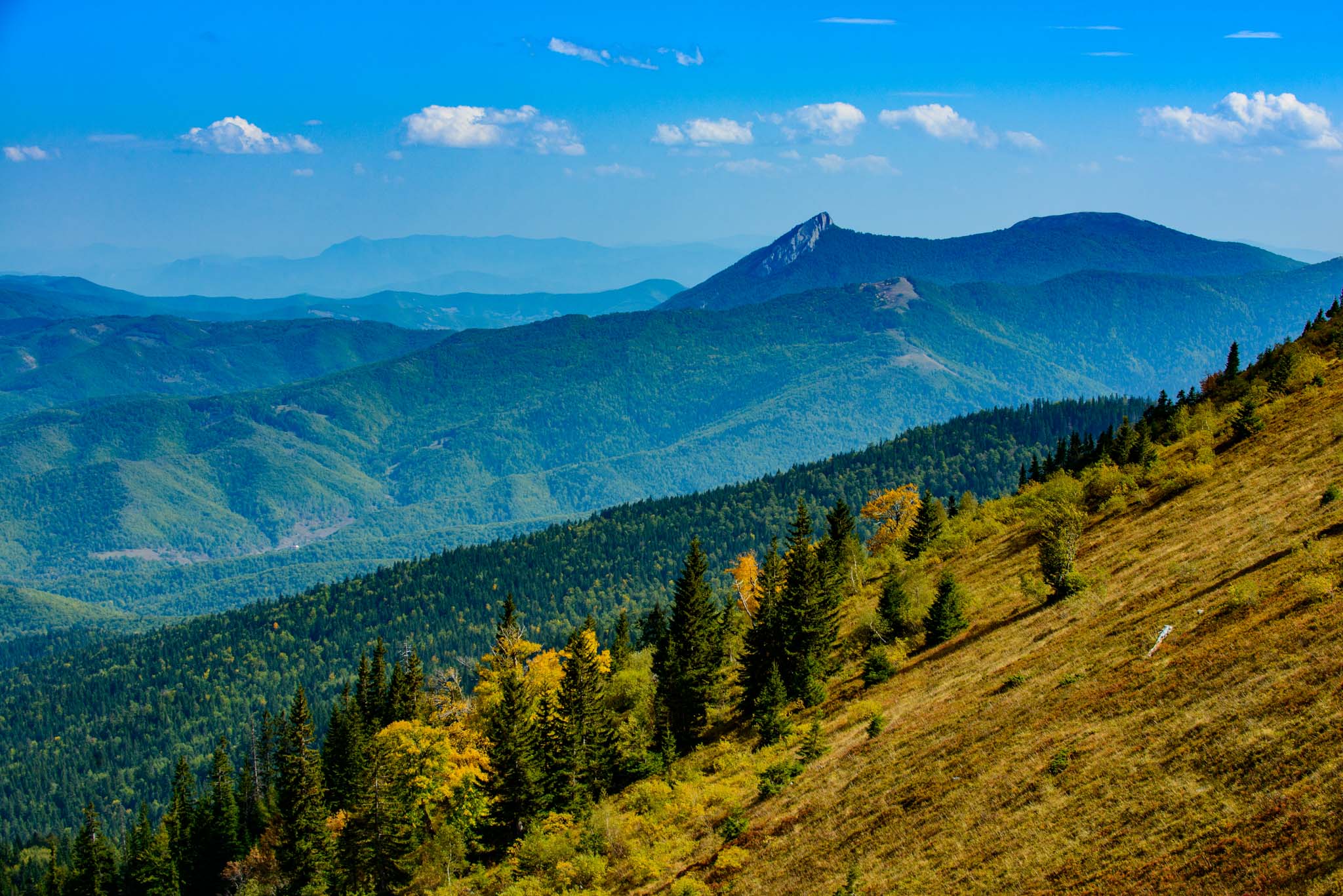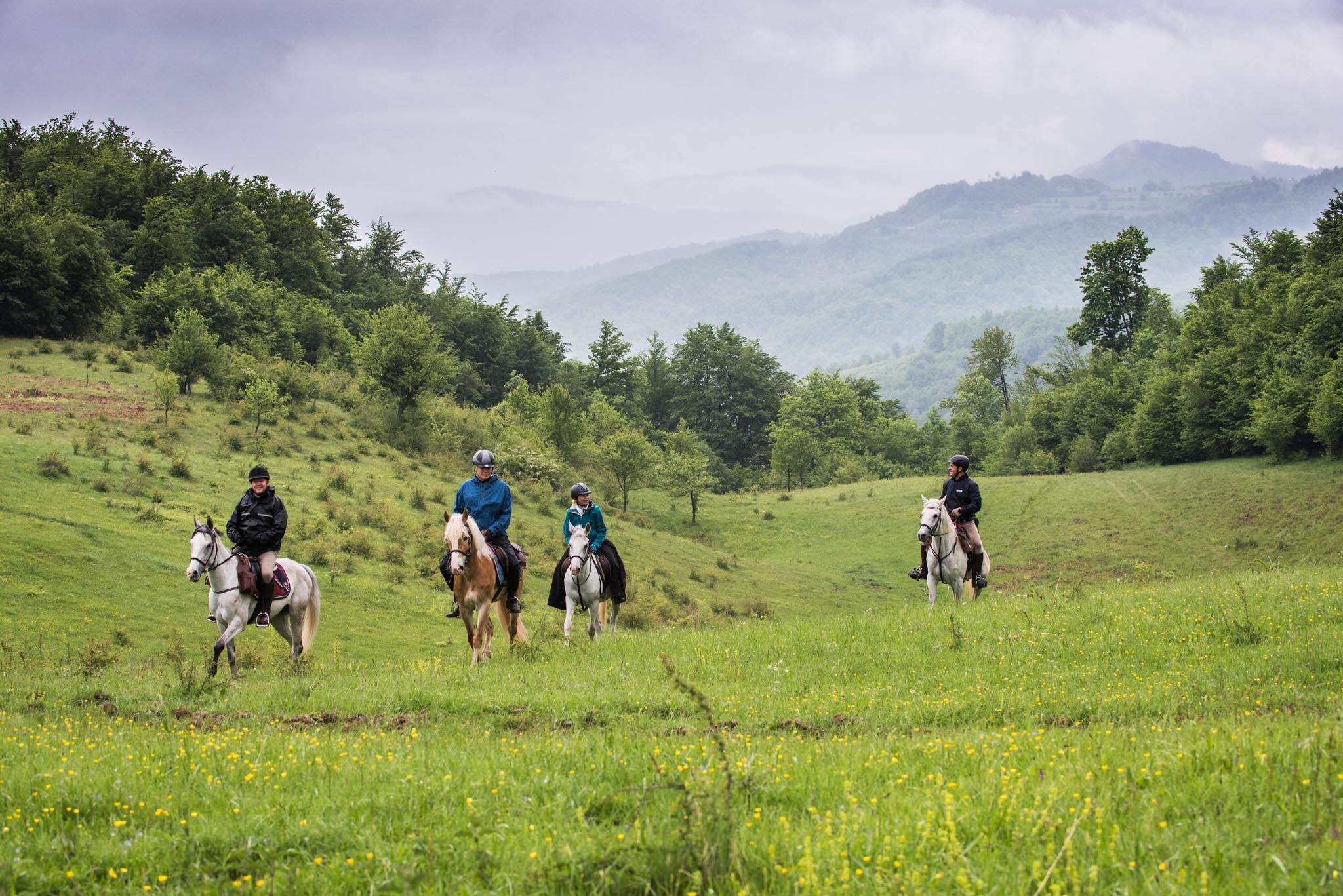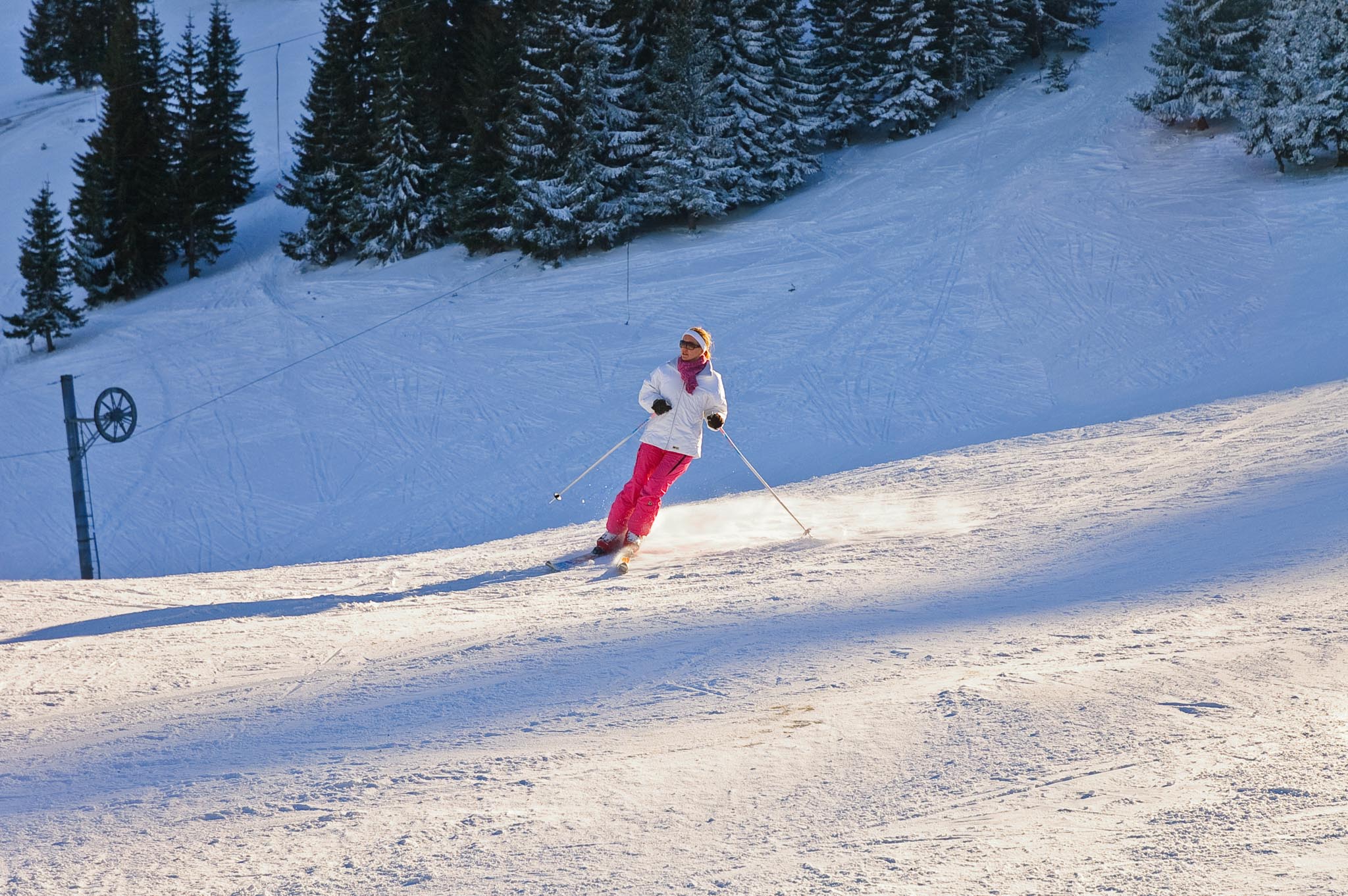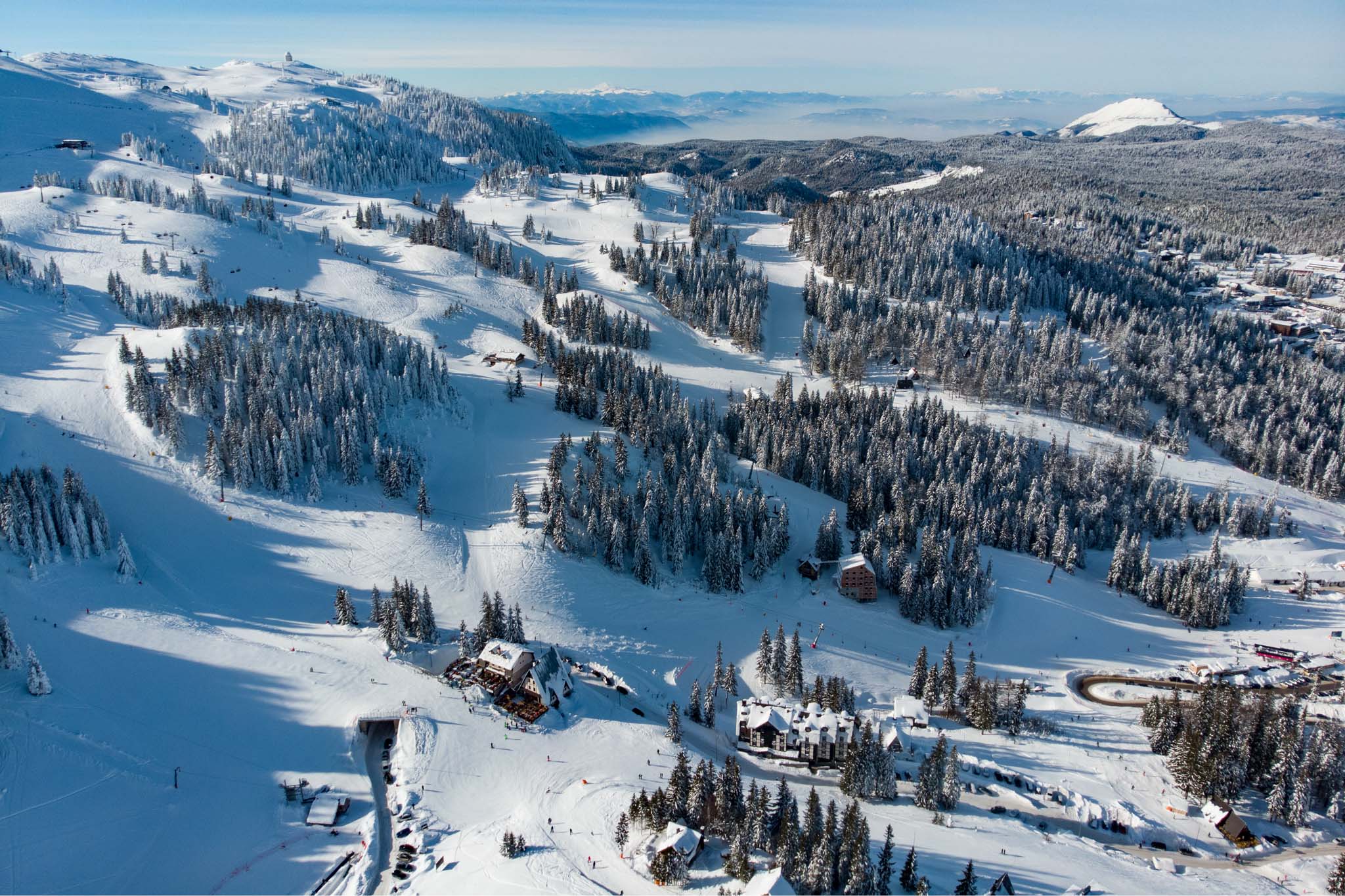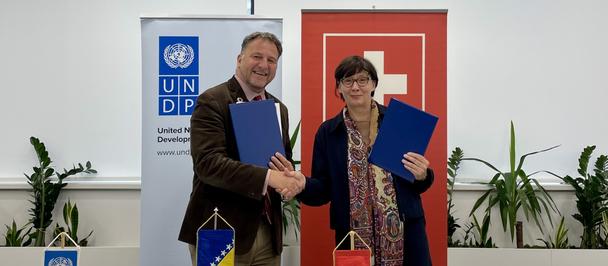Photo: Skiers at Jahorina. Photo: Sulejman Omerbasic/UNDP BiH
Though its weather may be unpredictable, the beautiful Mt Jahorina – a 1984 Winter Olympic venue – has attracted thousands of skiers for decades.
But in recent years, nature admirers have begun flocking to the area in spring, summer, and autumn as well.
A mountain of possibilities
“Our mountains are certainly an enormous wealth, and we must not in any way see them only as a potential for winter tourism; we have to see them as destinations where year-round tourism is developed,” said Dragan Sokolovic, a dedicated tourism professional who has worked for over 35 years in the area.
Starting during the lead-up to Sarajevo’s 1984 Winter Olympic Games Mr Sokolovic recalls how he was one of the first employees of the celebrated Hotel Bistrica. He later moved to work as a hotel receptionist and head of reception in what he describes as one of the most renowned hotels in Yugoslavia.
With the expansion in the numbers of accommodation facilities, there is much to be done in terms of the design, development, and construction of ancillary infrastructure, especially that which would boost off-season tourism.
The apex of potential
Over the course of his career, Mr Sokolovic saw tourism expand in Bosnia and Herzegovina and the Jahorina mountain complex. Catalysed by the Olympics, he remembers when 5,000 skiers could be transported by the cable car each hour, keeping seven lines running all day long. He recalled how prior to and shortly after the Olympics, many hotels opened on the mountains surrounding Sarajevo – including on Mt Jahorina, Mt Bjelasnica, and Mt Igman, attracting tourists from around the world.
Initially, tourism was facilitated by Yugoslav agencies and state companies. Beyond the investments into accommodation, there were investments in the accompanying infrastructure. The whole of Sarajevo, and nearby small town Pale, worked together to help tourism flourish.
Nowadays, mostly through the efforts of private owners, there have been investments into accommodation facilities, but not the supporting infrastructure necessary for year-round visits, Sokolovic noted.
Activating action
Knowing how to respond is key to building resilience.
That is why the UNDP-implemented, Green Climate Fund-financed project, ‘Advancing the National Adaptation Plan (NAP) process for medium-term investment planning in climate sensitive sectors’ is working to improve climate adaptation planning, and action, raise awareness of - and enhance education about - the need to adapt to climate change and support the development of a sustainable, climate resilient, and more responsible tourism sector. A sector that understands explicitly its vulnerabilities to climate change. Co-ordinated with the Ministry of Foreign Trade and Economic Relations of BiH as a state-level ministry in charge of co-ordinating climate change adaptation activities throughout the country, and the Ministry of Spatial Planning, Civil Engineering, and Ecology of Republika Srpska as the country’s UNFCCC and GCF focal point and the Federal Ministry of Environment and Tourism, the NAP for BiH provides a foundation for proactively adapting.
Bosnia and Herzegovina has already been affected by many climate extremes: intense precipitation, heat waves, extremely high temperatures, droughts, floods, stormy winds, and more. An increase in the intensity and frequency of these extremes can be expected in the decades to come. As in other sectors, climate change is becoming one of the key issues affecting the development and management of the tourism sector in BiH. In this regard, winter mountain tourism is directly exposed to the consequences of climate change, given the relatively low altitudes at which domestic ski centres are located, and the dominance of the winter tourist season.
In addition to the negative implications for the winter tourist season in mountain resorts, due to higher daily temperatures on the Mediterranean coast, mountain resorts can be affirmed as new destinations during the summer tourist season. Accordingly, it is important to plan in detail the adaptation measures and its financing and implementation methods
For mountain resorts, the NAP report for BiH refers to expert estimates that “winter tourist destinations, located below 1,500m altitude will not be able to rely on snow precipitation and that the borderline, by the end of this century, could rise to 1,800m altitude.”
Mt Jahorina ski trails traverse that knife edge, arrayed in elevation between 1,300 and 1,800m.
Prior to the pandemic, predictions were that the tourism sector would employ about 114,000 people and make up about 3.5 per cent of GDP by 2028.
Though climate change increases the difficulties inherent to developing and managing tourism, there are potentially some upsides that the mountain communities of BiH can avail themselves of, the country’s NAP report noted.
Adjusting to the new normal
Even three decades ago - including during the 1984 Olympic Games, when rain washed away snow in the week before the Olympics, and wild weather was raging on Mt Bjelasnica just before the men’s alpine events - virtually any weather is possible. This did not stop tourism from developing, but resulted in a fundamental need for adaptability and resourcefulness.
Confidence rising
The COVID-19 pandemic made tourism drop significantly around the world. According to the United Nations World Tourism Organization, the number of international tourist arrivals declined by 83 per cent between March and December 2020 compared with the previous year.
But confidence is slowly rising. As the tourist sector seeks to address pent-up demand, the need for inclusive, sustainable growth has never been clearer.
Year-round resilience
As mountain resorts build back better, economic opportunities for communities around Mt Jahorina may no longer be centred around winter sports, the potential for year-round resilience is in sight.
For Dragan Sokolovic who is nearing retirement age, the new climatic conditions have given rise to a burst of creativity. He noted that there is still much unused potential on Mt Jahorina, which he sees as a store of wealth that needs to be more strategically conceptualised and prepared with suitable infrastructure.
“All the sudden weather changes have to be reacted to with activities that will keep visitors coming”, he said. “Jahorina offers so many possibilities, but they need to be planned.”
Long-term resilience
In the face of a changing climate, NAPs provide a foundation for proactively adapting. Promoting ambitious climate action across the world, NAPs also ensure that countries can support their citizens.
Supporting the authorities of BiH to advance the NAP process and reaching the goals outlined in the Paris Agreement and 2030 Agenda for Sustainable Development, Green Climate Fund (GCF) resources are being used to raise awareness of parliamentarians, young politicians, and youth about the importance of integrating climate change-related risks, coping strategies - and opportunities - into ongoing development planning and budgeting processes.
For more information on the project, please visit the project profile here.
For more information on UNDP BiH, visit here.

 Locations
Locations
